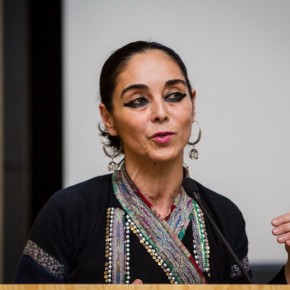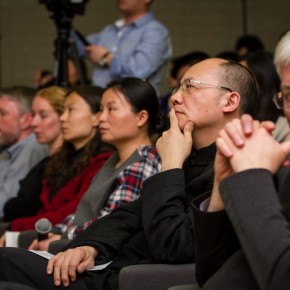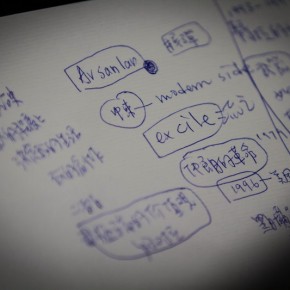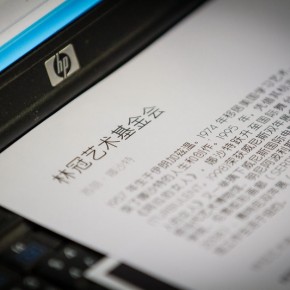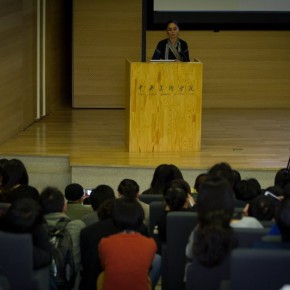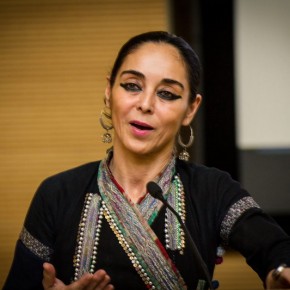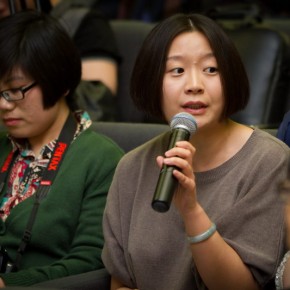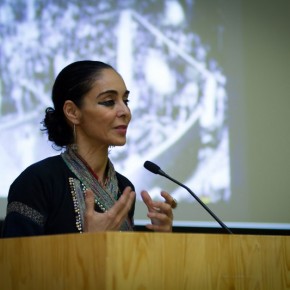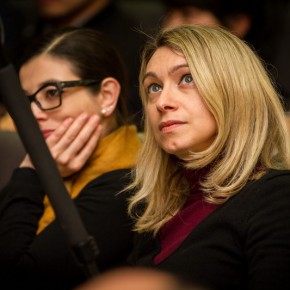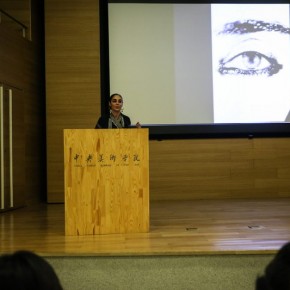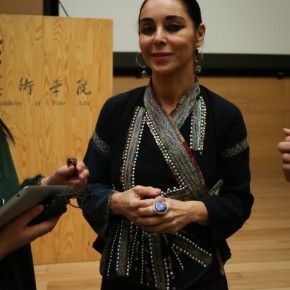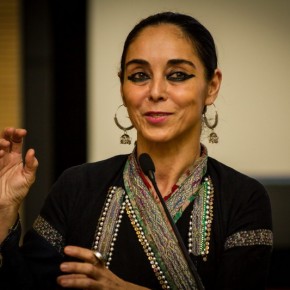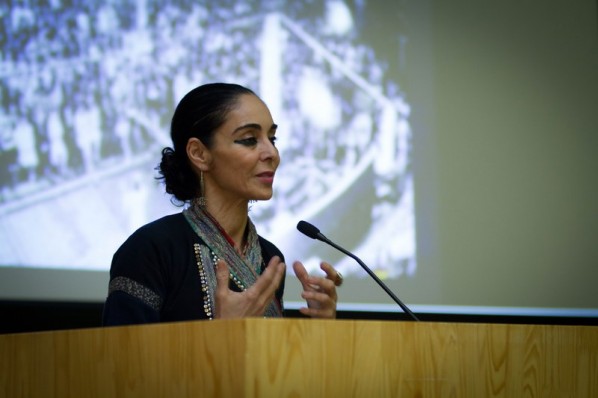
Iranian-American artist Shirin Neshat was invited to lecture at the CAFA Art Museum at 18:30, on April 12, 2013. The lecture was the fourth round of the series of lectures organized by the academic committee of CAFA. Jointly sponsored by the Academic Committee of CAFA, CAFA Art Museum, and Faurschou Foundation, it was presided over by Miao Xiaochun.
Initially she screened “Turbulent” (1998), a video installation works, which had won the Golden Lion Award at the Venice Biennale 1999. The viewers were deeply shocked by the opposition between the two genders, as well as the nontraditional way of singing, in the film.
After the screening, Neshat initially expressed her joy in visiting China. She said, as an Iranian-American artist, living aboard for years, she had more freedom within artistic creation, compared with the artists living in Iran, at the same time, which made her distant from home and family. Neshat said frankly, like most of the Iranian artists, her artistic creations had an element of political overtones. She was often placed in this political and artistic dilemma. However, artistic creation was actually a very powerful weapon, to inspire and mobilize people to actively participate in political activities, and playing a key role in the assault of the hegemony of political discourse. She also said that both her creative ideas and elements of form were affected by the political situation in Iran. Poetic and full-of-metaphor verses often appeared in her works, which is actually a unique form of expression created by Iranians when coping with political reviews.
Neshat believes that she is a nontraditional artist, and stressed that she had not followed any of the existing artists and art genres, her own works feature her personal thinking on life, so that the forms and contents of the works change along with different life experiences. But there are some themes and creative elements throughout all her creations. For example, her works have always reflected the contradiction and opposition in the visual and concept; in her photographs, there emerges a few common elements such as weapons, female bodies, veils, and beautiful Persian verse, etc.
Following on from this, Neshat displayed her representative works, including the “Women of Allah” (1993-1997), “Turbulent”(1998), “Rapture” (1999), from which we can see the thinking on the opposition between women and men, with the emphasis on the women rebel consciousness. She had engaged in the field of film art with her works “Passage”(2001), and “Tooba”(2002). Through “Women Without Men”( 2004), she did not only have a deeper understanding of the mysterious side of human nature, but a better expression in her Iranian political and social thinking.
“The Book of Kings” by Shirin Neshat, on view in Beijing, was created on the background of the “Arab Spring”, and “Green Movement in Iran” in 2009, inspired by the “SHAHNAMEN”, an epic poem created by Iranian poet Ferdowsi in the 11th century. By which, Neshat hoped to commemorate the nameless masses who courageously died for justice in the movement against the corrupt government.
In addition, Neshat also briefed the audience on a few of her latest works.
In these works, the work created in collaboration with an American photographer last year in Egypt, and a short film, completed recently, in cooperation with the famous movie star Natalie Portman, are the continuation of the creative subject of her thinking on people and humanity.
Finally, Neshat shared her creative ideas for the coming period: focus on the greatest female musician in the Islamic world in 20th century, setting about making a film in Egypt in 2014.
In the Q & A session after the lecture, the audience was full of curiosity in the artist and her works. The lecture closed at 20:30.
Journalist: Chen Yifei, translated by Chen Peihua/CAFA ART INFO
Photography: Hu Zhiheng/CAFA ART INFO


